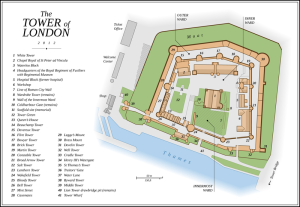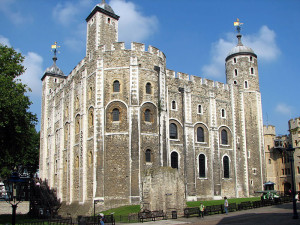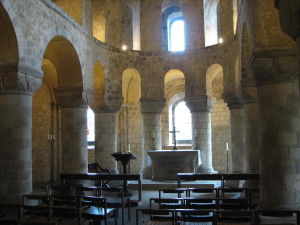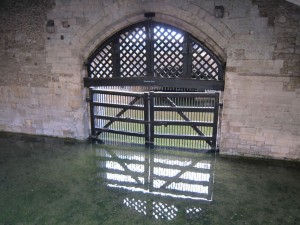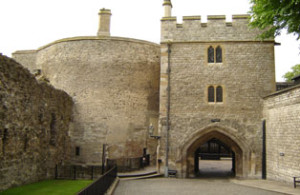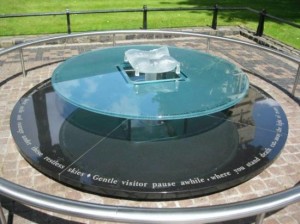One of the most memorable sites we visited during our visit to London in 1998 was the historic Tower of London. There are so many interesting and dramatic stories about this well-known royal palace, military fortress and former prison. In this post I will discuss the origins of the Tower including the different buildings located within the Tower walls and their varied history over the past centuries. In the second post, Tower of London – Part Two, I will discuss the history of the Jewel House which holds the famous Crown Jewels of England, the legend of Tower ravens and the duties of the Yeoman Warders.
A brief history of the Tower of London
The Tower of London, officially known as Her Majesty’s Royal Palace and Fortress, is located on the north bank of the River Thames near central London, England. The Tower has been an important location and was originally intended as the royal palace for the reigning monarch and was built as a fortress against invading forces. During the centuries the Tower functioned as a treasury and Royal Mint, an armory, a public records office and a secure place for the Crown Jewels of England. The Tower of London was also used as a prison and according to historic records it is said that some of the prisoners were very important and high ranking people, such as Sir Walter Raleigh and Princess Elizabeth who would later become Queen Elizabeth I. The Tower was also the site of many executions; some of those people executed were Anne Boleyn, Catherine Howard and Lady Jane Grey but the most recent execution was during World War II when the German spy Josef Jakobs was killed by a firing squad.
In 1066, the site of the current Tower of London was founded during the Norman Conquest by the aptly named William the Conqueror. William set out to build several castles and fortresses throughout England as a line defense from invading forces. In 1078, the construction of the White Tower was started and when it was completed 20 years later the vast size and height of the castle dominated the surrounding city of London and for this reason it became known as the Tower of London.
Currently, the Tower of London covers 12 acres and is laid out in a series of three enclosures or wards with an additional 6 acres surrounding the area outside the walls. The inner ward was built during the reign of King Richard the Lionheart and it is the area where the main buildings, such as the White Tower, are located. The outer ward that surrounds the entire castle was built during the reign of King Edward I and the layout of the grounds has basically remained the same since that time with very little changes. These multiple enclosures of the castle were meant to protect the Tower in the case of an attack and it proved a formidable line of defense. In addition to those fortifications, a ditch was dug and filled with water to create a moat and 21 additional towers were added over time to provide increased protection.
Surprisingly, the Tower has also been the home of some very interesting animals. During the reign of King Henry III, there was a Royal Menagerie that included exotic animals such as an elephant, lions, leopards and a polar bear that attracted the public’s attention when it would occasionally be released to go “fishing” in the Thames. By the late 1800s, before the animals were relocated, the Tower held over 280 animals of 60 different species. One of the most famous animals associated with the Tower are the large black ravens and for more information about the legend of how they came to be held there, please see the Tower of London – Part Two post.
Things to see and do at the Tower of London
The White Tower –
The White Tower was one of the strongest of the Norman fortresses and measured 118 feet by 105 feet at the base and rose to a height of 90 feet, not including the corner towers. In the traditional style of a Norman keep, the White Tower’s northern side was built into an existing mound and the building entrance was accessed from a wooden staircase that could be removed in the event of an enemy attack. On the west corners of the building there are square towers, on the north corner there is a round tower with a spiral staircase that ascends to the upper floors and on the south corner there is a large semi-circular section where the St. John’s Chapel is located. Since the castle was meant to be a royal residence with additional comforts “fit for a king”, four fireplaces were added to provide warmth and latrines were built into the walls.
St. John’s Chapel (located in the White Tower) –
The St. John’s Chapel is located in the southern section of the White Tower on the second floor. The chapel is a wonderful example of Norman architecture constructed with imported stone from France, there is a vaulted nave and round piers that support simple arches with carved scallop and leaf designs and behind the altar are beautiful stained glass windows that depict the Virgin Mary and the Holy Trinity. Much later, in a windowless recess in the chapel crypt in the north wall, there was a secured room designed for the safekeeping of the royal treasures and important documents. Today the St. John’s Chapel is still used for various services held throughout the year.
Line of Kings Exhibit (located in the White Tower) –
For over 400 years, visitors to the Tower of London have come to see a wonderful display called the Line of Kings Exhibit which features royal armor and arms with full-sized wooden horses and the figures representing the Kings of England over the past centuries. The display has been changed several times since it was first put on exhibit after the Restoration.
Today, many of the wooden horses on display are over 325 years old and the exhibit shows the armors of several kings, including those of King Charles I and King James II. An interesting display case shows two contrasting suits of armor, one of a “giant” and the other a “dwarf”. But the centerpiece of the Line of King exhibit is the impressive armor of King Henry VIII.
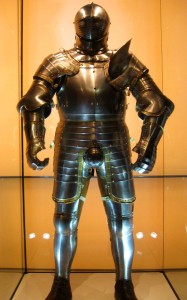
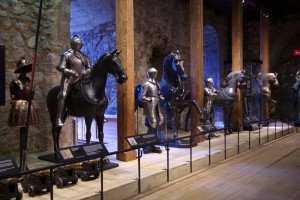
St. Thomas Tower –
The function of the St. Thomas Tower has changed over the past centuries; it was originally intended as a royal residence for King Edward I but it was also used later as a place to hold prisoners. The St. Thomas Tower was built in the late 1270s and is known as the Medieval Palace of the Tower. Now, when visitors come to tour the Tower they will see a recreation of the bedchamber of King Edward I. During the process of researching the recreation of the room design, historians tried to be as accurate as possible. King Edward was known to travel across the country from one palace to another, so for his comfort the bedroom was made to travel with him. The large four-poster bed, required because he was an unusually tall man for that time at 6 ft. 2 in., could be taken apart and re-assembled at the different locations. In addition to the bed, the raised platform or dais, the curtains and other furnishings could easily be transported by cart from place to place.
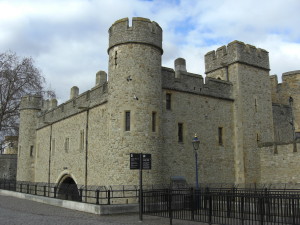
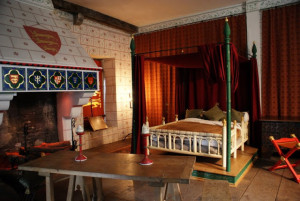
Located below the St. Thomas Tower is a stone archway with a double gate that became known as the Traitor’s Gate. This is the famous entrance from the River Thames into the Tower and it was the place that many prisoners were brought through when they were incarcerated within the Tower.
The Bloody Tower –
At the time that this Tower was built by King Henry II in the mid-1200s it was originally intended as another line of defense for the castle and it was named the Garden Tower since the views from the upper floors looked out onto a garden area. During the centuries the purpose of the building was changed and it later used to hold prisoners and because of the cruel events that are believed to have occurred there it was given the name of the Bloody Tower.
One of the earliest prisoners to this tower was Sir Walter Raleigh, he was held here during his long imprisonment and the lower portion of the tower is currently furnished as it would have appeared during that time. On the upper floors there is a display telling the story of the two “Little Princes” of the Tower and their mysterious disappearance and possible murder. After the death of King Edward IV, the next in line to the throne was the 12 year old Prince Edward. Since he was too young to rule, he and his brother, 9 year old Prince Richard, were put under the “protection” of their uncle the Duke of Gloucester. Sadly, the two princes were last seen in June 1483 at the Tower of London and been speculated that they were murdered by suffocation. Coincidently(?) their uncle went on to become King Richard III but it is widely thought that he was ultimately responsible for the death of the two young princes.
Tower Green –
Tower Green was said to be the historic site of the execution of two queen consorts of England, they were Anne Boleyn the second wife of Henry VIII and Catherine Howard the fifth wife of Henry VIII. Normally executions were performed outside the Tower of London on the nearby Tower Hill so as to accommodate large crowds. The “privilege” of being beheaded in the privacy of Tower Green was in accordance with a higher ranking person so as to avoid the insults of the crowds and to die with dignity. At the time of our visit in 1998, there was only a small area in the middle of the Green paved with granite bricks as ordered by Queen Victoria to mark the place of the execution scaffold and a small plaque that was added later with the names of the people who had died on or near the spot. In 2006, a new contemporary memorial created by artist Bryan Catling was erected; it takes the form of a glass pillow resting on two polished disks, one disk is made of glass featuring the names of ten people (seven historically famous people and three soldiers that died on Tower Green) and the other disk is made of granite featuring a special remembrance poem.
TRAVEL NOTE: When visiting the Tower of London, I would definitely recommend the free one hour tour given by a Yeoman Warder guide. These tours are an excellent way to learn the history of the Tower, but they are also surprising entertaining and humorous despite the serious topics of imprisonment, execution and torture.
For more information, such as hours of operation and admission cost for the Tower of London, please see their website at www.hrp.org.uk/TowerOfLondon


